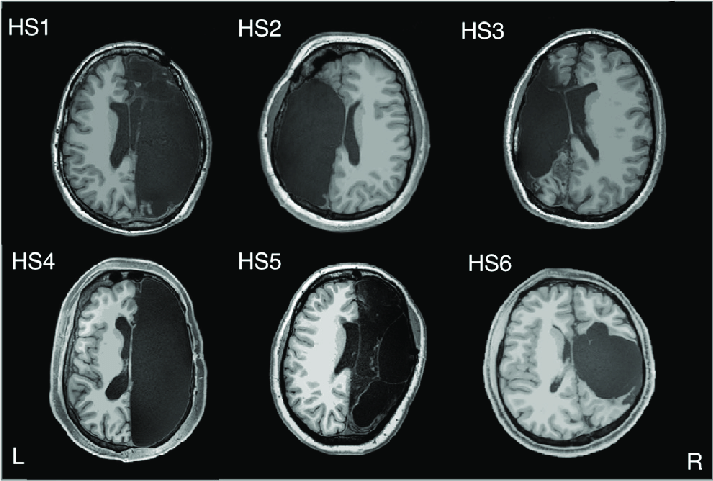
Hemispherectomy is a last-resource treatment for some neurological disorders. This radical intervention allows some patients to live normally, with better odds the earlier in life it happens. Somehow, the remaining hemisphere takes on the outstanding computational burden. Brain plasticity at smaller scales shows how functionality is adopted by adjacent tissue. In models of brain rewiring after stroke, circuits accepting new workload are close and similar to the damaged ones. Hemispherectomy demands more drastic changes, mixing far and functionally diverse regions. We lack mathematical models of this. We introduce a simple model of brain reorganization after hemispherectomy based on Self-Organized Maps (SOMs). We show how emerging representations in SOMs constrain brain reorganization after simulated hemispherectomy, resulting in some forbidden and some other favored rearrangement pathways, each with distinct symmetries and properties. We discuss what the enabled paths imply for the recovery of topographic maps and language functionality after hemispherectomy. We find how too much symmetry can be detrimental for the proper formation of representation systems. We also obtain results regarding the existence of window periods – a critical age after which hemispherectomy causes irreversible function loss. These findings illuminate various (hitherto unexplained) clinical facts about window periods for language recovery. Our model offers a powerful thinking tool and suggests simple guiding principles for large-scale brain plasticity – notably, that the geometry of emerging representations turns into topological constraints for large-scale brain rearrangement. This offers insights about why such an aggressive intervention results in highly functional brains nevertheless, and suggests specific treatments for simulated, pathological disorders observed in our SOM models.
Ponente: Luis Seoane. Centro Nacional de Biotecnología, CSIC.
Fecha y hora: jueves, 16 de septiembre de 2021 a las 12:00.
Lugar:
- Presencial (hasta completar aforo): seminario de Física Computacional, en la planta baja del edificio de Física (junto a las pantallas) de la Facultad de Ciencias.
- Online: a través de Google Meet en https://meet.google.com/drx-hnze-fpo.
